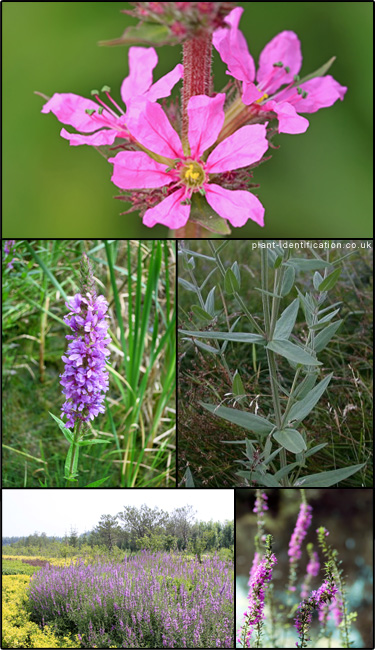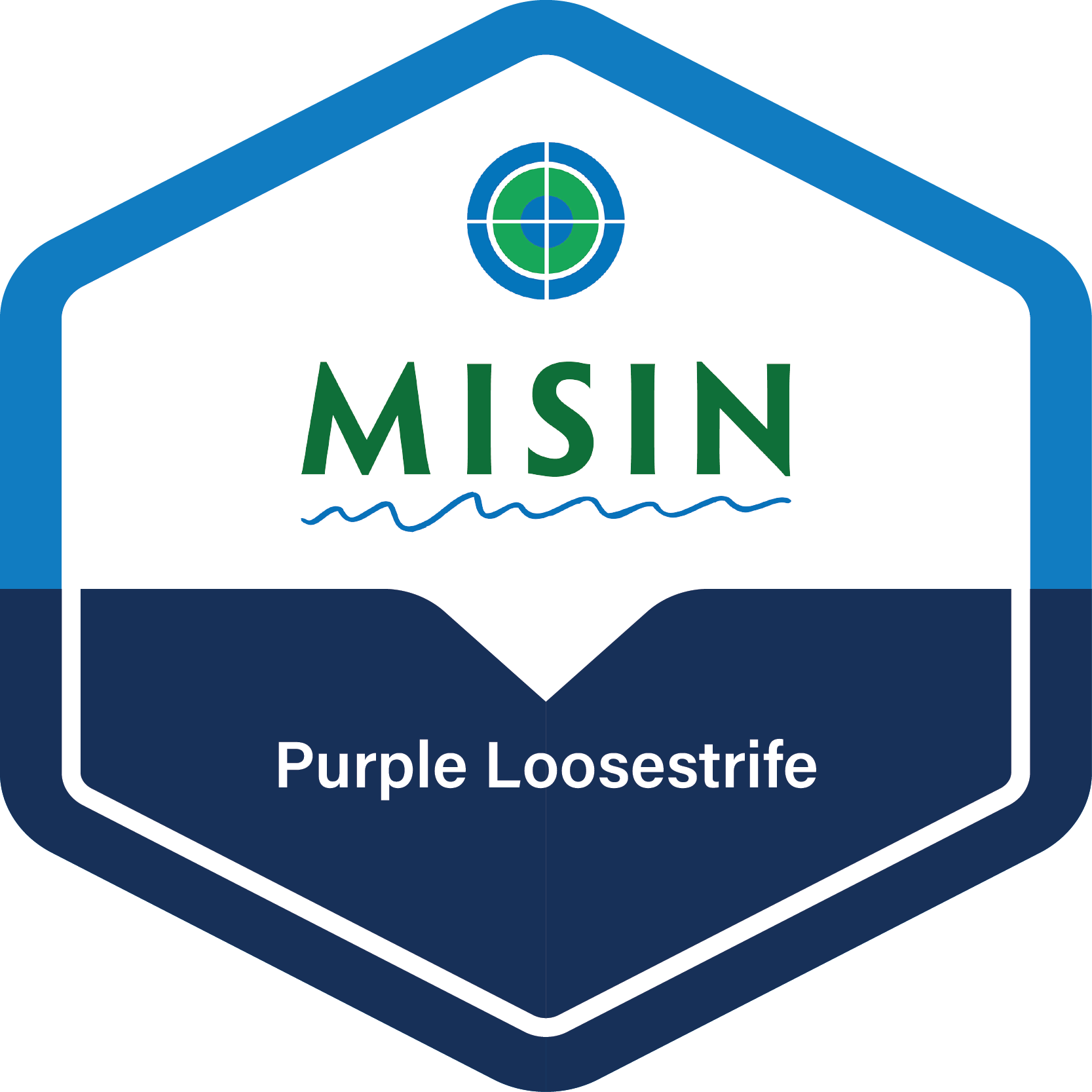Purple loosestrife (Lythrum salicaria)
 Synonyms: Rainbow weed
Synonyms: Rainbow weedCommon Names: Purple lythrum, Rainbow weed, Spiked loosestrife
Description: This species is restricted under Michigan law; attractive but persistent weed; spreads vigorously in moist soil conditions; crowds out native wetland plant species.
Habit: Herbaceous, perennial, 0.5 to 2.0 m (1.5-6 ft) tall; densely pubescent, especially the upper part of the plant; pubescence variable; strongly developed taproot becomes woody with age.
Leaves: Lanceolate to almost linear; opposite or whorled; sessile to somewhat clasping; 3-10 cm (1-4 in); larger leaves at the base.
Stems: Four-angled; glabrous to pubescent.
Flowers: Numerous, purple (also white or light pink) in color, terminal spike-like inflorescences in axillary clusters of two to several, 5-7 petals; bloom July through October.
Fruit and seeds: Seed pod, small, prolific seed production.
Habitat: Shade intolerant but can tolerate up to 50% shade; found in disturbed wet areas; tolerates a wide range of soil types but prefers organic soils.
Reproduction: By seed, or vegetatively by resprouting from cut stems and regenerating from pieces of root stock.
Similar species: Native winged loosestrife (Lythrum alatum) has solitary flowers borne in axils of small bracts; petals 4-7 mm long; leaves are larger toward base of plant; fireweed (Epilobium angustifolium) has 4-petaled flowers and leaves taper at base.
Monitoring and rapid response: Monitor wetlands, lakes, stream banks, and ditches in July and August when plants are in bloom. Hand pull seedlings; remove all flower and seed heads. Foliar herbicide treatment after peak bloom (late August) provides effective control but may damage non-target plants. Galerucella beetles (G. calmariensis, G. pusilla) provide effective Biocontrol although the beetle colonies may die out on smaller loosestrife populations. See Online Resources section in the back of this field guide for information on the beetles. Permits are usually required for herbicide use in water bodies and wetlands. For information see MDEQs Aquatic Nuisance Control website at: https://www.michigan.gov/egle/0,9429,7-135-3313_3681_3710---,00.html Credits: The Michigan Natural Features Inventory (MNFI) has partnered with MISIN to provide the information in this fact sheet. Species images and/or information were used with permission from "A Field Identification Guide to Invasive Plants in Michigan's Natural Communities" and "A Field Guide to Invasive Plants of Aquatic and Wetland Habitats for Michigan.
Common Name: | Purple loosestrife |
Scientific Name: | Lythrum salicaria |
Family: | Lythraceae (Loosestrife) |
Duration: | Perennial |
Habit: | Aquatics |
USDA Symbol: | LYSA2 |
 View Species Course |
|
